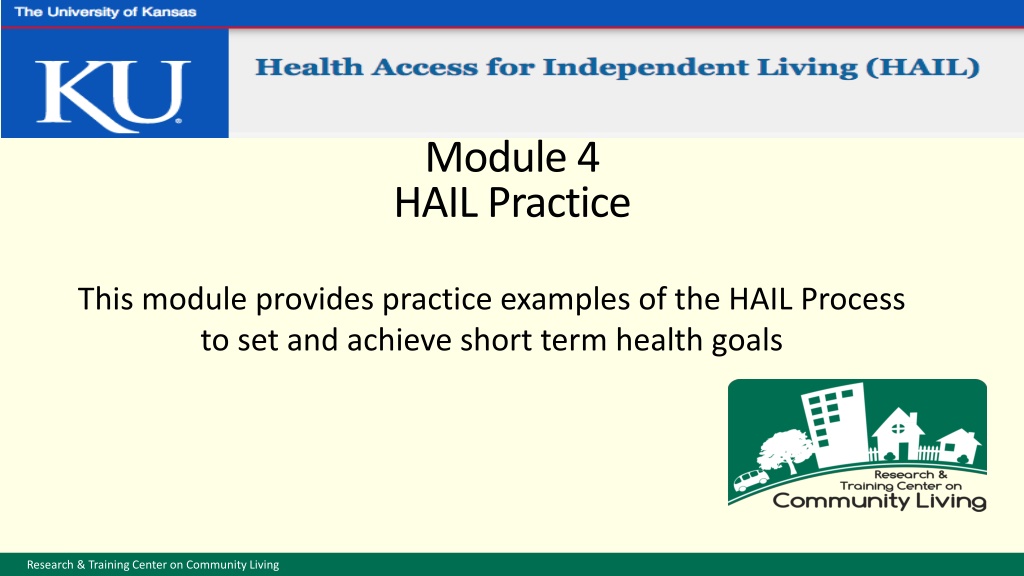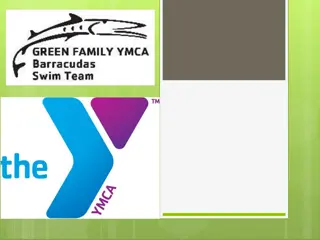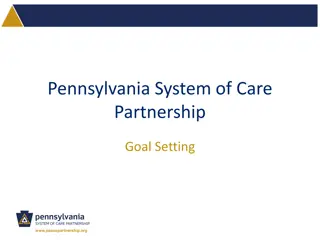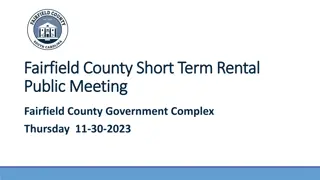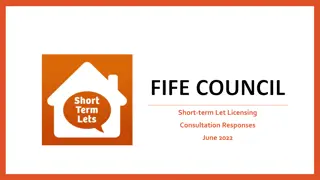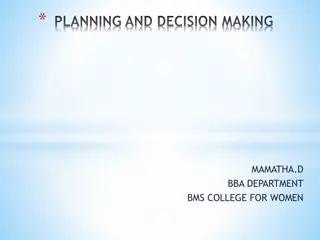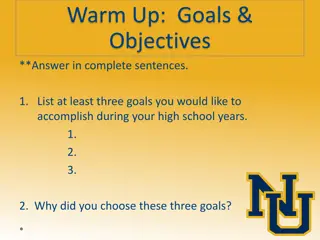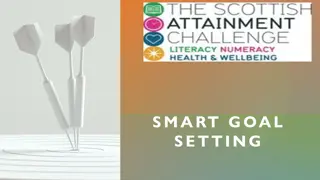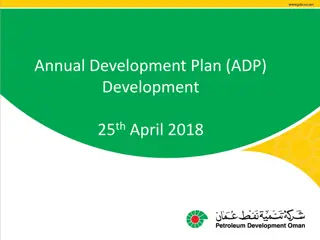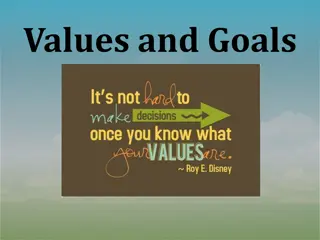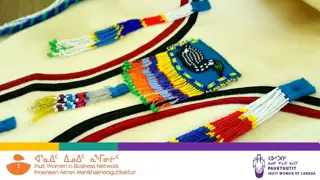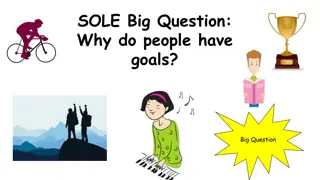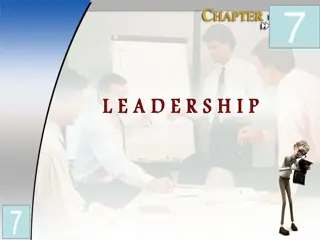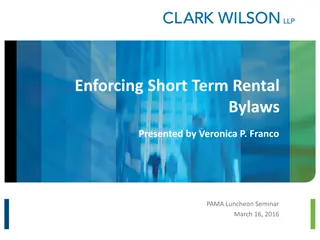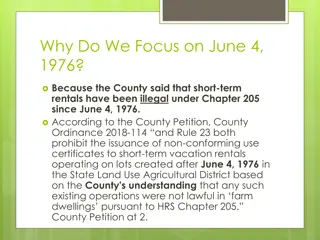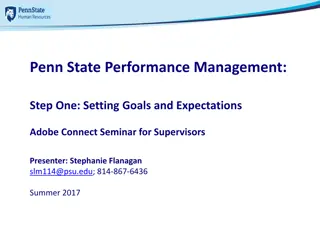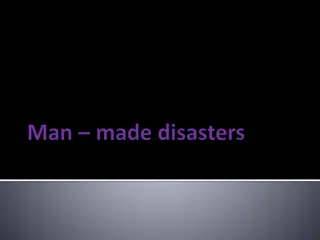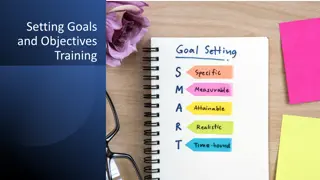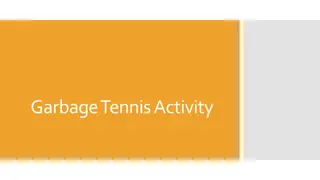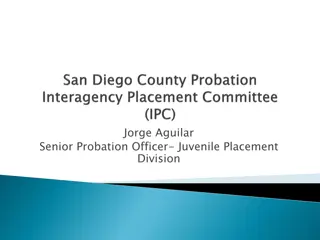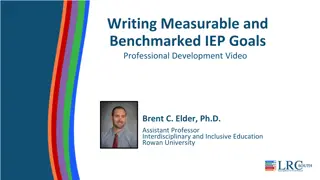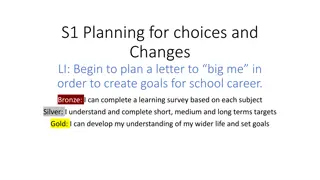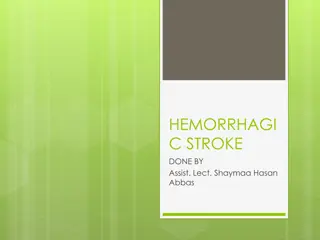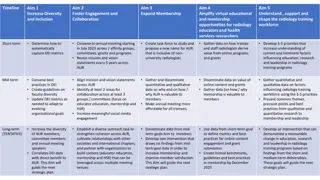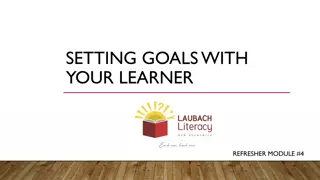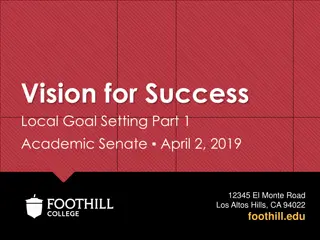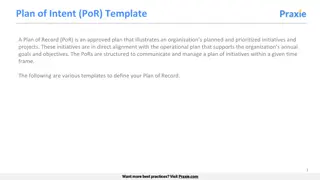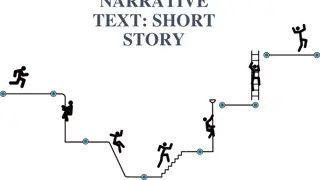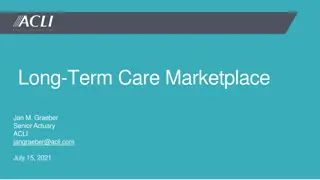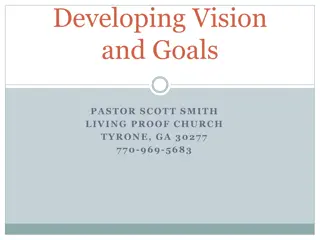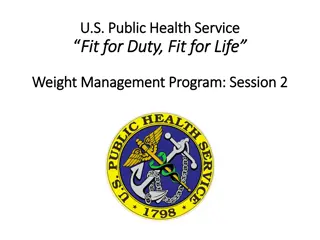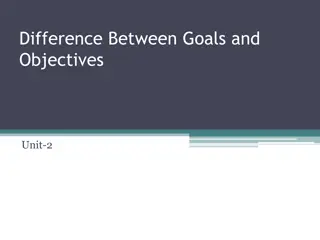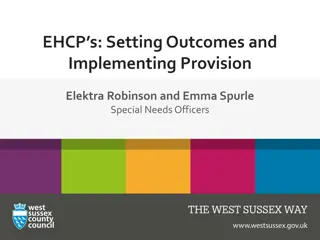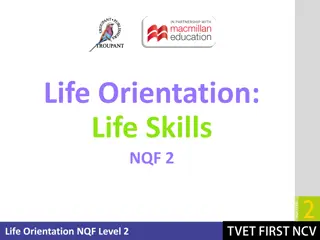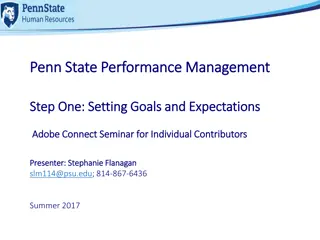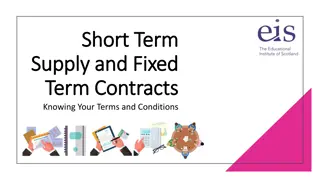Setting and Achieving Short-Term Health Goals with the HAIL Process
This module focuses on practice examples of the HAIL Process for setting and achieving short-term health goals. It covers steps such as identifying short-term needs, finding resources, and defining goals using the HAIL program. The content includes real-life scenarios like Mario wanting to reduce pain through non-medical ways and finding resources on weight management to alleviate pain. Through these examples, consumers can learn to set, track, and achieve their health goals effectively.
Uploaded on Sep 27, 2024 | 0 Views
Download Presentation

Please find below an Image/Link to download the presentation.
The content on the website is provided AS IS for your information and personal use only. It may not be sold, licensed, or shared on other websites without obtaining consent from the author. Download presentation by click this link. If you encounter any issues during the download, it is possible that the publisher has removed the file from their server.
E N D
Presentation Transcript
Module 4 HAIL Practice This module provides practice examples of the HAIL Process to set and achieve short term health goals Research & Training Center on Community Living
Module 4 Learning Outcomes To be able to assist consumers set, track and achieve short term health goals using the HAIL program Research & Training Center on Community Living
Practice Examples Research & Training Center on Community Living
Step 1: Identify Short Term Needs Consumer identifies needs related to Secondary Conditions (pain, fatigue, depression) Consumer identifies needs related to Consumer Skills ILS asks consumer to Identify Short Term Health Needs Not able to identify ? Complete the checklist and find ideas ILS responsibility Consumer responsibility Research & Training Center on Community Living
Step 1: Identify Short Term Needs Mario advises his ILS that he would like to try additional non-medical ways to reduce his pain. He reveals that his doctor has mentioned that he s overweight which could strain his joints and cause pain. Identify Short Term Health Needs: What secondary condition/consumer skill do I want to address? PAIN Research & Training Center on Community Living
Step 2: Find Resources Consumer explores beyond the HAIL website (friends, family, peer, and other support networks) Consumer explores the HAIL website (http://hail.ku.edu/) ILS assists consumer to find resources Not able to find resources ? Consumer asks CIL/ILS ILS responsibility Consumer responsibility Research & Training Center on Community Living
Step 2:Find Resources Mario explores the HAIL website to see if it provides resources to deal with his pain. He informs the ILS about a fact sheet on how losing weight can help reduce pain. People who are overweight can experience some relief in their pain by losing weight Research & Training Center on Community Living
Step 3: Define Goals Consumer defines Outcome Goal What result would I like to see in the area I have chosen within a given time frame ? Consumer defines Process Goal What do I need to do to achieve my outcome goal ? ILS asks consumer to define goals Remember! The goals have to be related to the needs identified in step 1 The process goals should be SMART ILS responsibility Consumer responsibility Research & Training Center on Community Living
Step 3: Define Goals Mario decides that he would like to reduce his pain by losing weight. During a discussion, Mario reveals that he drinks several bottles of pop everyday and that his doctor has advised this is not good. Based on this information, the ILS helps Mario to define his outcome goal and process goal. Outcome Goal: What is the end result I would like to see in the area I have chosen within a given time frame ? I would like to lose 5 lbs in 3 months. Process Goal: What do I need to do toward achieving my outcome ? I will reduce consumption of sugared drinks (pop) to two bottles weekly for the next month. Research & Training Center on Community Living
Step 4: Outline a Plan of Action Back Up plan What obstacles do I envision in achieving my action plan ? How will I overcome the obstacle? Action Plan What do I need to do to achieve my process goal? ILS asks consumer to outline a plan of action Think! Convert your goals into doable actions Think about obstacles you might face ILS responsibility Consumer responsibility Research & Training Center on Community Living
Step 4: Outline a Plan of Action The ILS helps Mario devise an activity plan for him to achieve his goal. The ILS also helps Mario anticipate barriers that might prevent him from pursuing his plan. Back-up Plan Action Plan What obstacles do I envision in achieving my action plan ? When I m thirsty I reach for pop. What do I need to do to achieve my goal? I will replace sugared drinks with water on all days of the week except for one bottle each on Wednesdays and Sundays, the days I go bowling. How will I overcome the obstacle ? I will keep flavored sparkling water handy instead of pop. Research & Training Center on Community Living
Step 5: Track Progress ILS asks consumer to track on the HAIL Goal Tracking Form Consumer tracks progress toward goal Consumer responsibility ILS responsibility Research & Training Center on Community Living
Step 6: Review ILS asks consumer to review progress Consumer is prompted to ask What can I do differently to be successful? Consumer is prompted to ask Was I able to achieve my process goal? Consumer is prompted to ask What barriers prevented me from doing it? Consumer responsibility ILS and Consumer repeat the process on the same goal or a different one. ILS responsibility Research & Training Center on Community Living
Step 6: Review Mario and the ILS review his progress with the following questions: Was I able to achieve my process goal? Yes, most of the time. What barriers prevented me from doing it ? I was served pop at a birthday party and I drank some of it! What can I do differently to be successful? I will bring my own sparkling water to events like parties so that I can enjoy drinking it while others are having pop and other drinks, that way I won t be tempted to drink pop. Research & Training Center on Community Living
Marilyns Example Research & Training Center on Community Living
Step 1: Identify Short Term Needs Again Consumer identifies needs related to Secondary Conditions (pain, fatigue, depression) Consumer identifies needs related to Consumer Skills ILS asks consumer to Identify Short Term Health Needs Not able to identify ? Complete the checklist and find ideas Primary responsibility of ILS Primary responsibility of Consumer Research & Training Center on Community Living
Marilyns Story Now, let s watch a brief video that shows Marilyn working with her ILS to set a health-related goal. Research & Training Center on Community Living
What would Marilyns SMART Goal Worksheet look like based on the scenario? Research & Training Center on Community Living
Review of Goal-Setting and Tracking Process Identify health-related needs Find resources Define goals Outline a plan of action Track progress Review Research & Training Center on Community Living
General Tips for Consumers Set Short Specific goals Find a support system that encourages you Don t give up! Try other solutions Empowering Consumers Trust yourself! Understand your strengths and limitations Find a way to track your progress Persevere when confronted with barriers Research & Training Center on Community Living
Any Questions? Research & Training Center on Community Living
